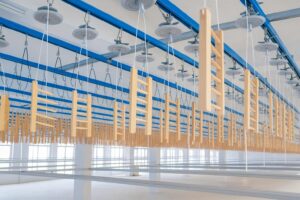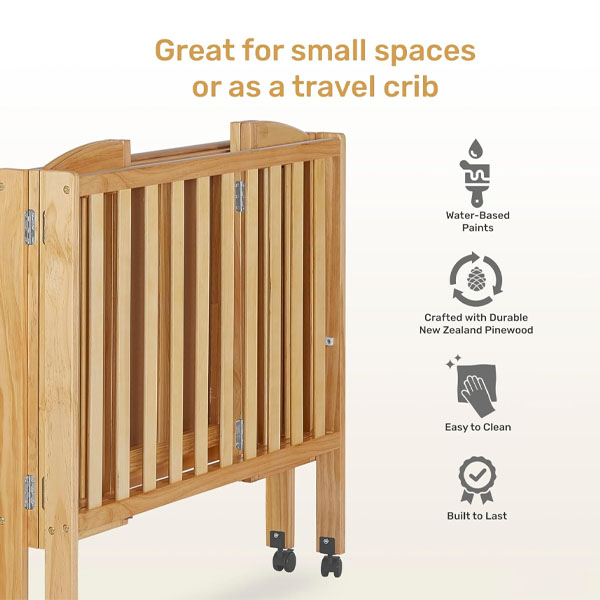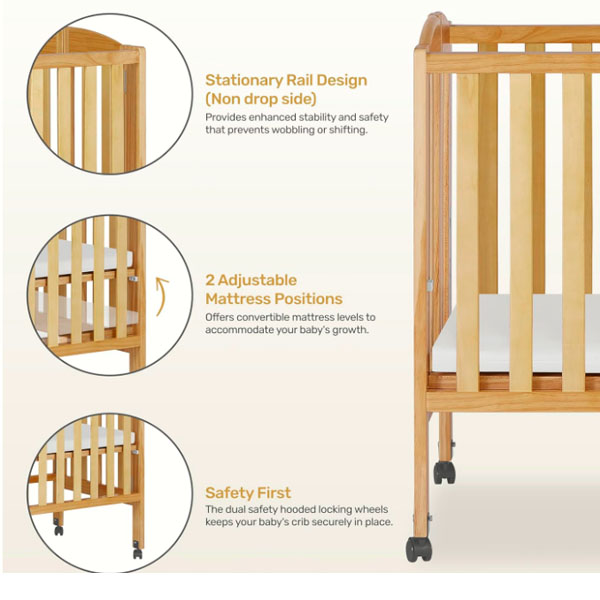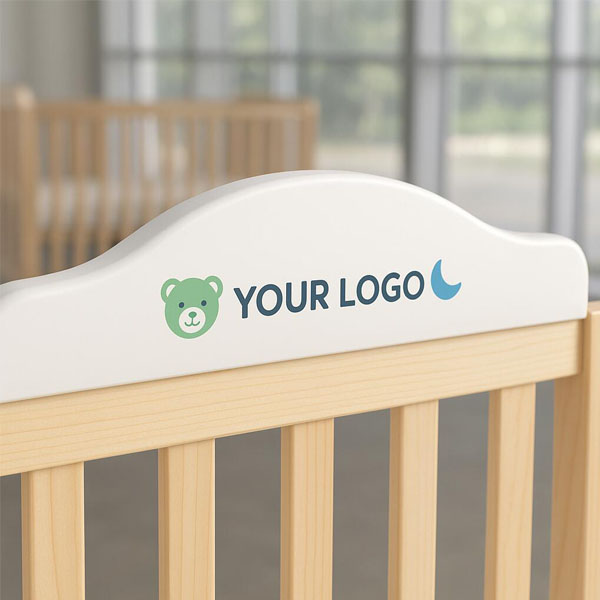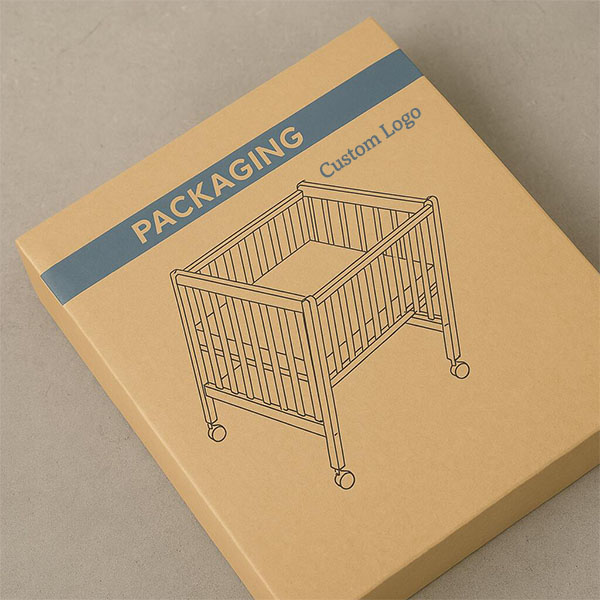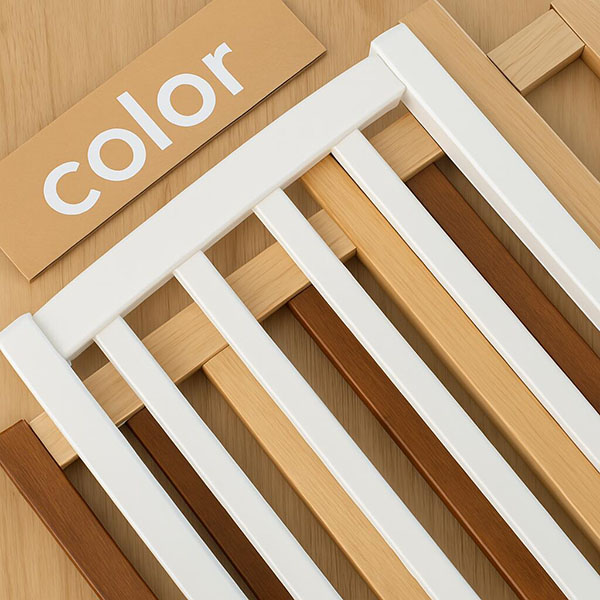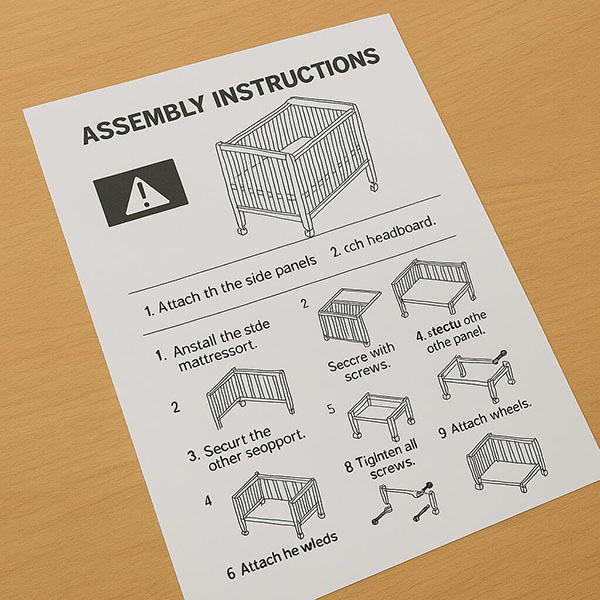Crib Buyer’s Guide: How to choose the safest crib for your baby
Cribs are the centerpiece of any nursery—and where your baby will spend most of their early life sleeping.
To choose the safest crib, look for fixed rails, certified materials, proper slat spacing (under 2 3/8"), and JPMA/CPSC certifications. Avoid drop-side cribs and loose-fitting mattresses.
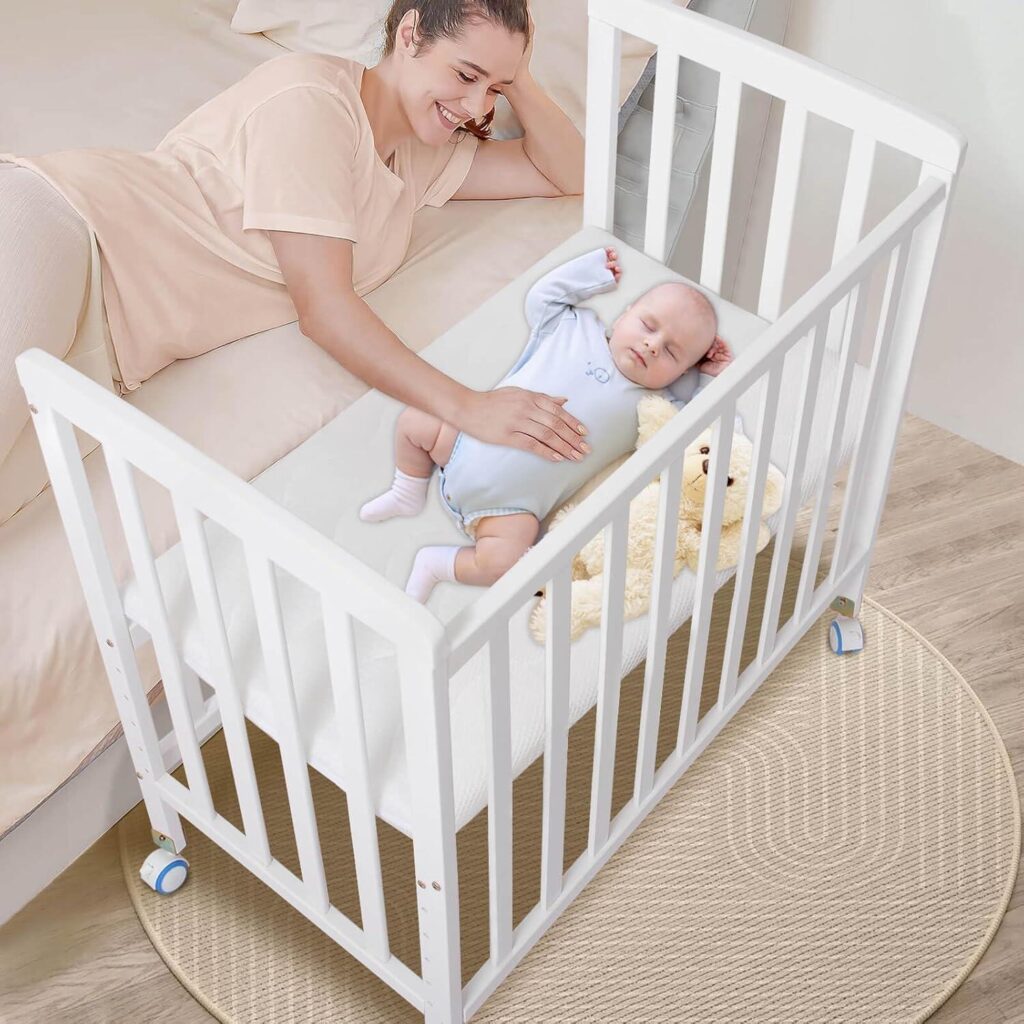
With so many crib styles and features out there, it’s easy to get overwhelmed. But safety should always come first. Here’s your no-fuss guide to picking the best crib for peace of mind.
What certifications should a safe crib have?
Labels matter. They show that the crib meets current safety laws.
A safe crib must be certified by the JPMA, comply with CPSC regulations, and meet ASTM standards for materials and build.
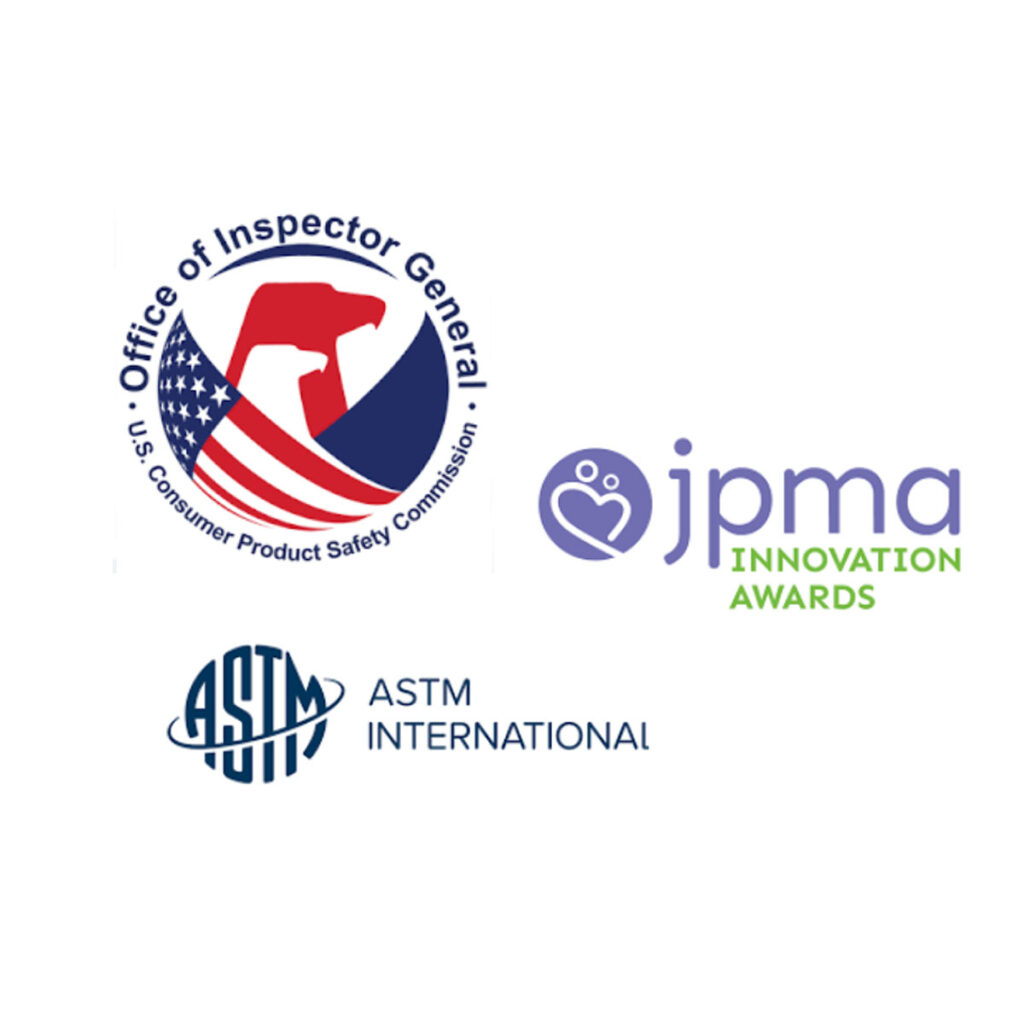
What to look for:
- JPMA Certified (Juvenile Products Manufacturers Association)
- CPSC Compliant (U.S. Consumer Product Safety Commission)
- ASTM Standards (American Society for Testing and Materials)
These certifications mean the crib passed tests for:
- Strength and durability
- Non-toxic finishes
- Structural safety (no sharp edges, gaps, or drop-sides)
| Certification | Proves What? |
|---|---|
| JPMA | Third-party safety testing |
| CPSC | Meets U.S. federal regulations |
| ASTM | Passes material + structure tests |
What physical features make a crib safe?
Design and construction are just as important as labels.
The safest cribs have fixed sides, smooth corners, firm mattress fit, and slats less than 2 3/8 inches apart.

Check these essentials:
- No drop sides (banned since 2011)
- Slat spacing: No more than 6 cm (2 3/8 in)
- Mattress fit: Less than two fingers between mattress and frame
- No decorative cutouts in headboard or footboard
- No corner posts that stick up over 1/16 inch
We once borrowed a crib from a family friend—it looked nice but had wide slats and no certification. We thanked them politely and chose a new one instead.
| Safety Feature | Why It Matters |
|---|---|
| Fixed side rails | Prevents collapse or gaps |
| Slat spacing | Keeps baby’s head/limbs safe |
| Tight mattress fit | No risk of entrapment |
Which materials are safest for baby cribs?
Babies chew, breathe, and sleep close to their crib—so toxic materials are a big no.
Cribs made from solid wood with water-based, non-toxic finishes are safest. Look for GREENGUARD Gold or low-VOC certification.

Best crib materials:
- FSC-certified solid wood (e.g. pine, birch, beech)
- Water-based paint or stain
- No MDF or particleboard with added formaldehyde
We chose a crib with GREENGUARD Gold certification and zero chemical smell out of the box. Totally worth the peace of mind.
| Material | Safe? | Notes |
|---|---|---|
| Solid wood | ✅ Yes | Most durable and chemical-free |
| MDF/Particleboard | ❌ Risky | Often contains formaldehyde |
| Metal | ✅ Yes (if coated) | Check coating for lead-free paint |
How do I ensure the crib fits in my nursery space?
Size matters—for both your baby’s sleep and your room layout.
Measure your space first and choose between full-size cribs (130 x 69 cm) or compact cribs (120 x 60 cm). Leave at least 1 meter clearance around.
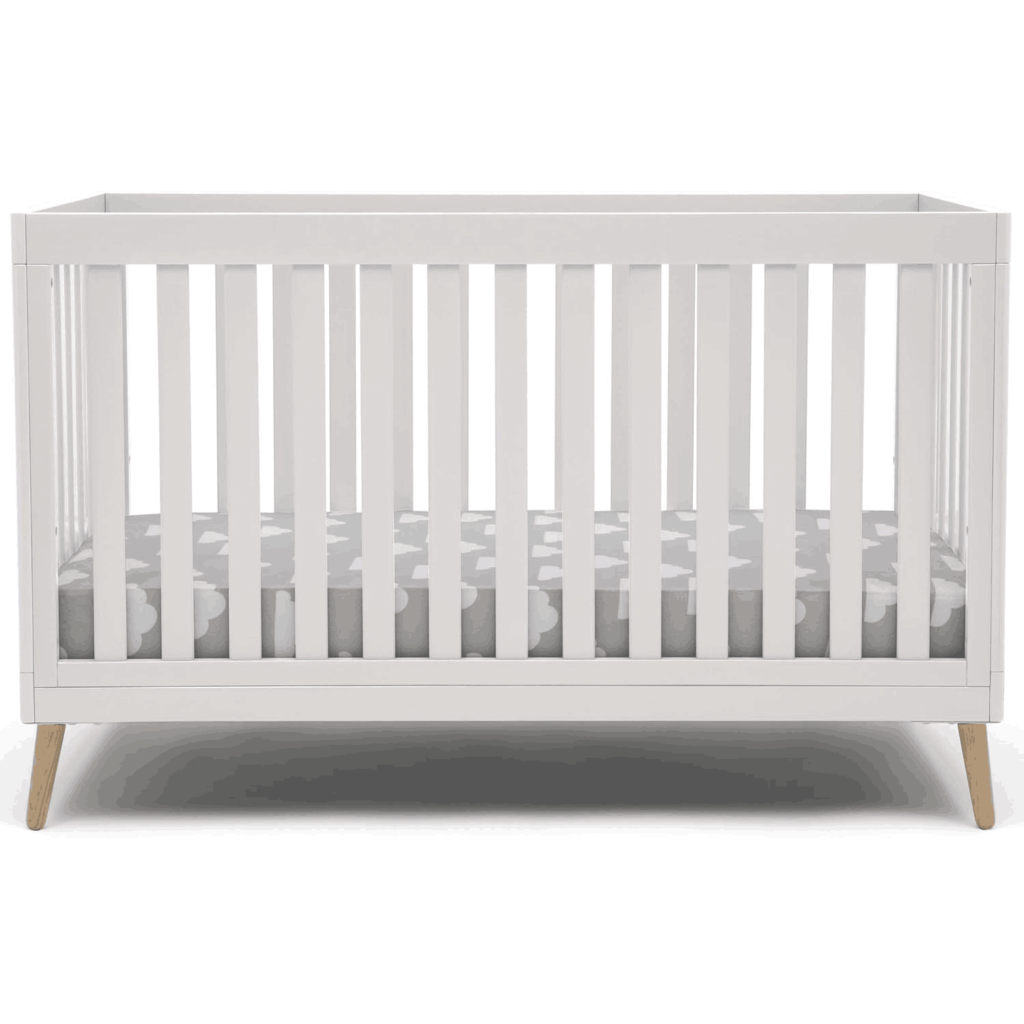
Don’t forget:
- Leave room for night feeds and changing
- Avoid placing cribs near windows, cords, or heaters
- Check mattress height adjustment—lower as baby grows
If you’re tight on space, mini cribs or foldable designs are a great option. Just make sure the mattress fits tight and meets the same safety standards.
Are custom cribs safe?
Yes—if made by trusted, certified manufacturers.
Custom cribs are safe when made with solid materials, safety-tested finishes, and according to JPMA/CPSC guidelines.
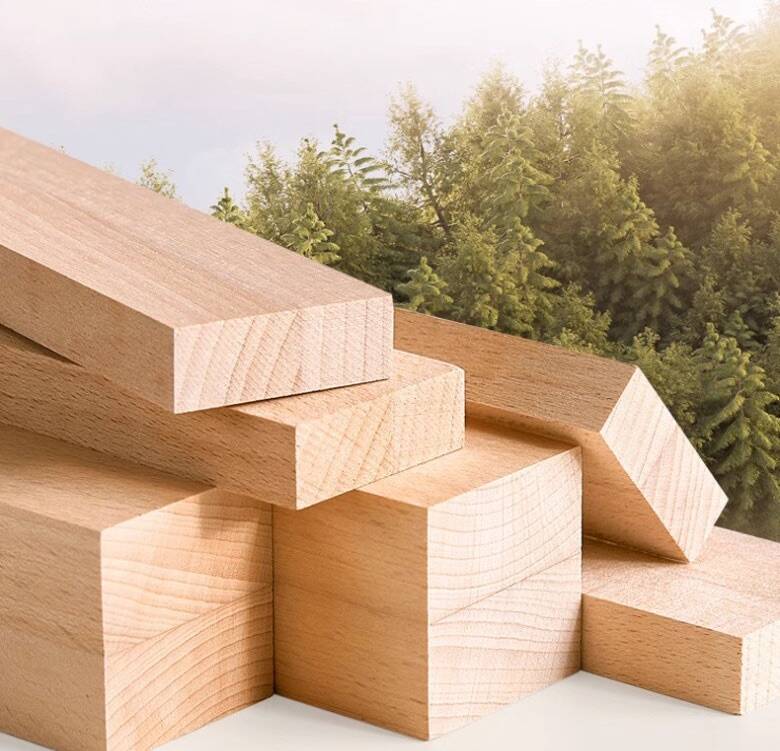
Craftsliving: Custom comfort, factory certified
About Craftsliving
At Craftsliving, we build custom baby cribs that meet all safety standards while offering parents more design control. As a direct manufacturer, we offer:
- Certified safe materials
- JPMA/CPSC compliance
- Custom sizes, colors, and finishes
- Wholesale and factory-direct pricing
Whether you’re working with a tight space, a themed nursery, or need bulk orders, Craftsliving makes it easy to create safe, beautiful cribs that grow with your baby.
We had a hard time fitting a standard crib into our corner nursery, so Craftsliving designed a compact version with locking wheels—and it fit like a glove.
Final checklist for buying a safe crib
Make sure your crib meets every safety standard and structural rule.
Use this checklist before purchasing:
✅ JPMA or CPSC certified
✅ Fixed sides (no drop-side)
✅ Slat spacing < 2 3/8 inches
✅ No sharp edges or cutouts
✅ Tight mattress fit
✅ Non-toxic, water-based finish
✅ Age-appropriate mattress height settings
✅ No decorative hardware or loose parts
Conclusion
A crib isn’t just furniture—it’s your baby’s safe space to sleep, grow, and dream.
Choose a crib that’s certified, secure, and well-built. For added support, consider custom-made options from trusted brands like Craftsliving. Safety starts here.

